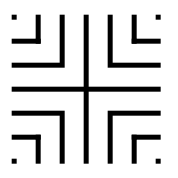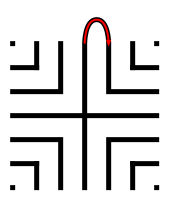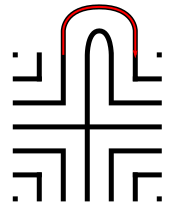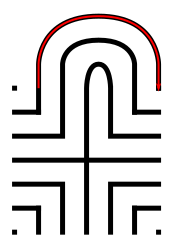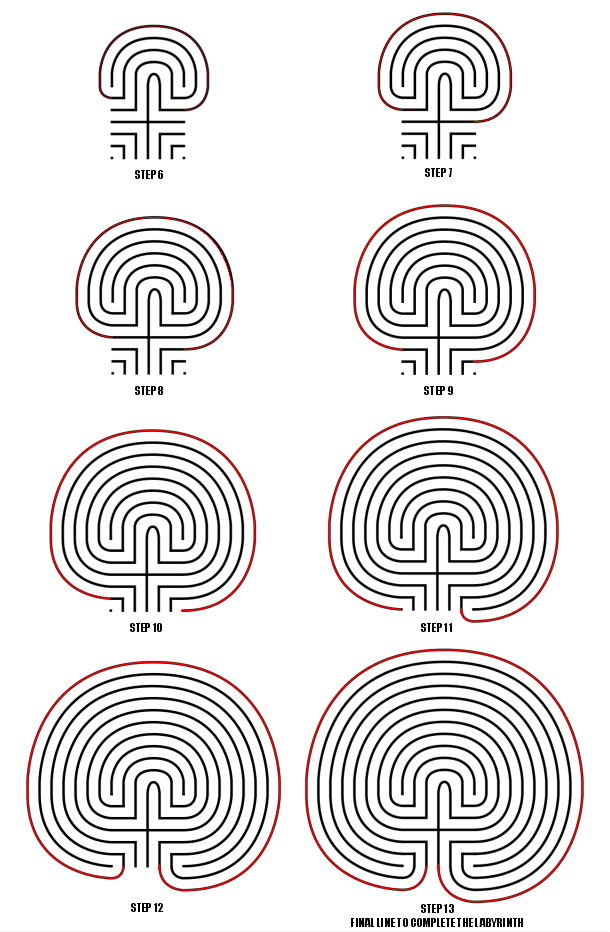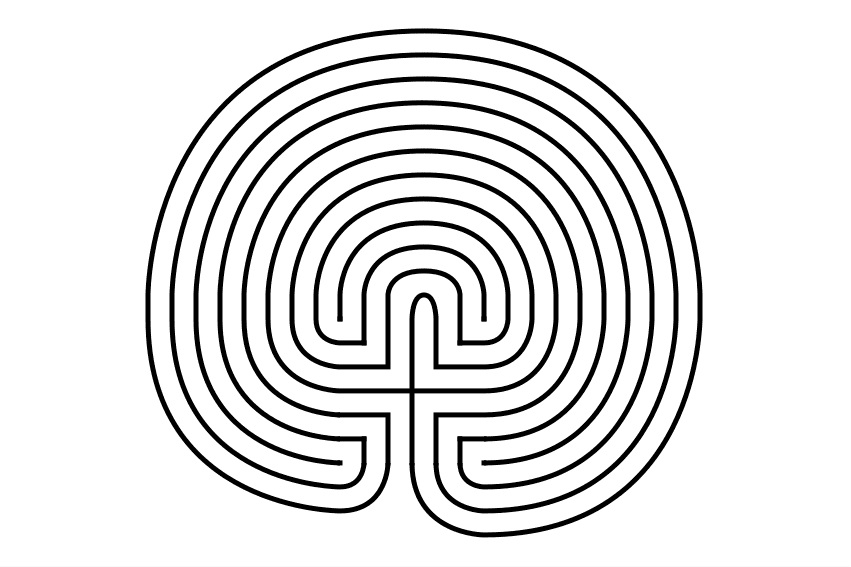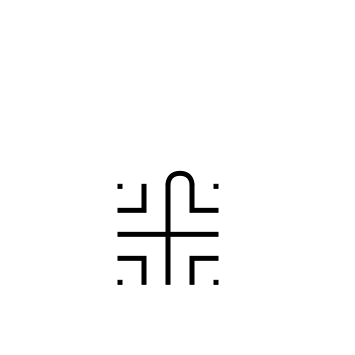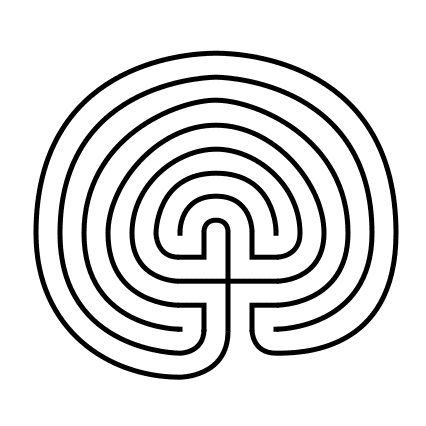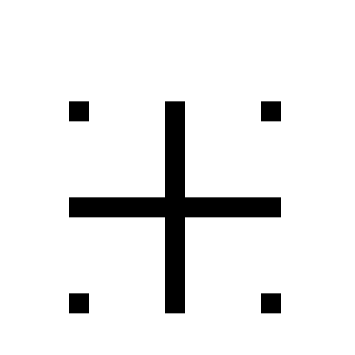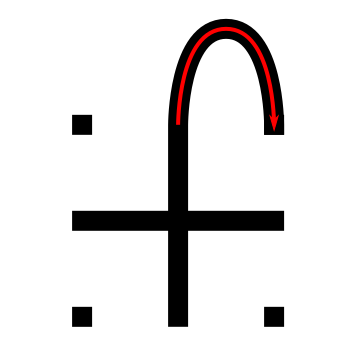When you draw and make mazes and labyrinths daily you inevitably read about the history of each. I took some time to read about the spiritual aspect of Labyrinths and here are the 5 best books I read on the subject. I suggest starting with Walking a Sacred Path, the most well known book on the subject and the first book that I review below.
Walking a Sacred Path: Rediscovering the Labyrinth as a Spiritual Tool by Dr. Lauren Artress 201 pages. AMZN
What I learned in this book:
Walking a labyrinth is a very personal experience for anyone who does it. Often it is a meditative and spiritual journey that parallels the journey you take in life.
Walking the labyrinth harkens back to the former days of pilgrimage in religious traditions.
There are many ways to walk a labyrinth. Do what feels right to you. Chapter four includes a process you might find helpful to make the walk productive.
The labyrinth is seen as a metaphor for many things: the union between heaven and earth, death and rebirth, faith and doubt, the brain, intestines or birth canal, and the journey to heaven.
The labyrinth reinforces the use of rituals to connect us.
A labyrinth is a walking meditation vs. the traditional still meditation.
What this book does best: The best book about the spiritual journey of walking labyrinths there is.
Labyrinth : Your Path to Self-Discovery by Tony Christie 312 pages. AMZN
What I learned in this book:
This book casts a wide net on the structure of the labyrinth and how it may tie in to a multitude on religions and practices including: Mithraism, Alchemy, the planets and cosmos, the Alchemical process, the 4 elements, Tarot cards, the Kabbalah tree of life, the mythical hero’s journey, Melchizedek, our death and rebirth, chakras, major arcana, the Ursa Major constellation, and the magical square of the moon. I would be shocked if came away from this book and said you learned nothing and everything spoken about was familiar.
There have been studies done about how people feel after walking a labyrinth and the results are 81% more centered and 87% more peaceful - John W Rhodes 2008 experiment
While discussing walking the labyrinth and finding your life’s purpose the author writes - “Books you buy or are given as gifts can indicate where your [life’s] purpose lies”. I found that statement to be very true in my own life. Books are great gifts, especially when they are carefully selected.
When walking a labyrinth you should have a threefold approach: knowledge, experience, and reflection.
What this book does best: This looks at the spiritual aspect of labyrinths from every angle and thru many lenses (see my first bullet point).
Exploring the Labyrinth: A Guide For Healing and Spiritual Growth by Melissa Gayle West 209 pages AMZN
What I learned in this book:
Walk the labyrinth with purpose. Have something in mind to mediate on/think about while you walk. And most importantly be open minded as you walk.
The labyrinth walk can help you deal with grief, fear and anger.
The book does a nice job discussing how a labyrinth can be used. Use the labyrinth for:
Physical Healing and Curing
Relaxation and Guidance
Re-connection to Self and Spirit
Illness and Pain as a teacher
Ritual and Celebrations
Has a nice guide or checklist to use when creating a labyrinth ritual for your celebration by answering a series of questions
Suggests that the center of a labyrinth should have an altar of some kind like a bench, tree, flowers or a statue.
What this book does best: The entire 2nd Part of the book is dedicated to making your own labyrinth. And while it covers drawing a Cretan and making a finger labyrinth, the real value is in making physical labyrinths. Instructions are included to make a both a Cretan labyrinth and the Chartres labyrinth with tape, as well as how to make the Cretan labyrinth with rope.
Walking the Labyrinth: A Place to Pray and Seek God by Travis Scholl 240 pages AMZN
What I learned in this book:
The meaning of the word Liminality - roughly the time between times, or the middle stage of a ritual.
I had never heard the quote from the Danish Philosopher Soren Kiekegaard before '“Life can only be understood backwards, but must be lived forward”
What this book does best: This is a Christian book. The author walks a labyrinth each day during Lent with a daily Scripture from the book of Mark being used to meditate on during the walk. The book tells about the scripture and speaks to how the author feels in modern day walking the labyrinth.
Labyrinths from the Outside In: Walking to Spiritual Insight by Rev Dr Donna Schaper and Rev Dr Carole Ann Camp 187 pages AMZN
What I learned in this book:
The meaning of the word Acedia - Being bored to death while being bombarded with stimulation
The origin of the word labyrinth may have come from the word labyrs which was a double headed Ax used on the island of Crete.
The book suggests breaking the walk of a labyrinth into the following parts, each with their own meaning and preparation: !.Preparation 2. Invocation (typically a prayer before the walk) 3. Walking in 4. Reaching the center 5. Walking out 6. Exit and Gratitude
The book suggests using the labyrinth to commemorate/celebrate/heal with rites of passage rituals for key moments in life. Including births, deaths, puberty, menopause, birthdays, retirement and any negative events that require healing.
What this book does best: The book ends with multiple chapters on ideas for walking the labyrinth with gratitude to celebrate holidays, religious events, the changing of the seasons, the zodiac, large life events and much more, all with a nod to the spiritual aspect of the walk.
If you are interested in more spiritual labyrinth aspects I suggest the following:
Lauren Artress website - For coaching, workshops and classes.
Veriditas - The nonprofit labyrinth group founded by Lauren Artress
Worldwide Labyrinth Finder - Find a labyrinth to walk near you, or while on vacation







